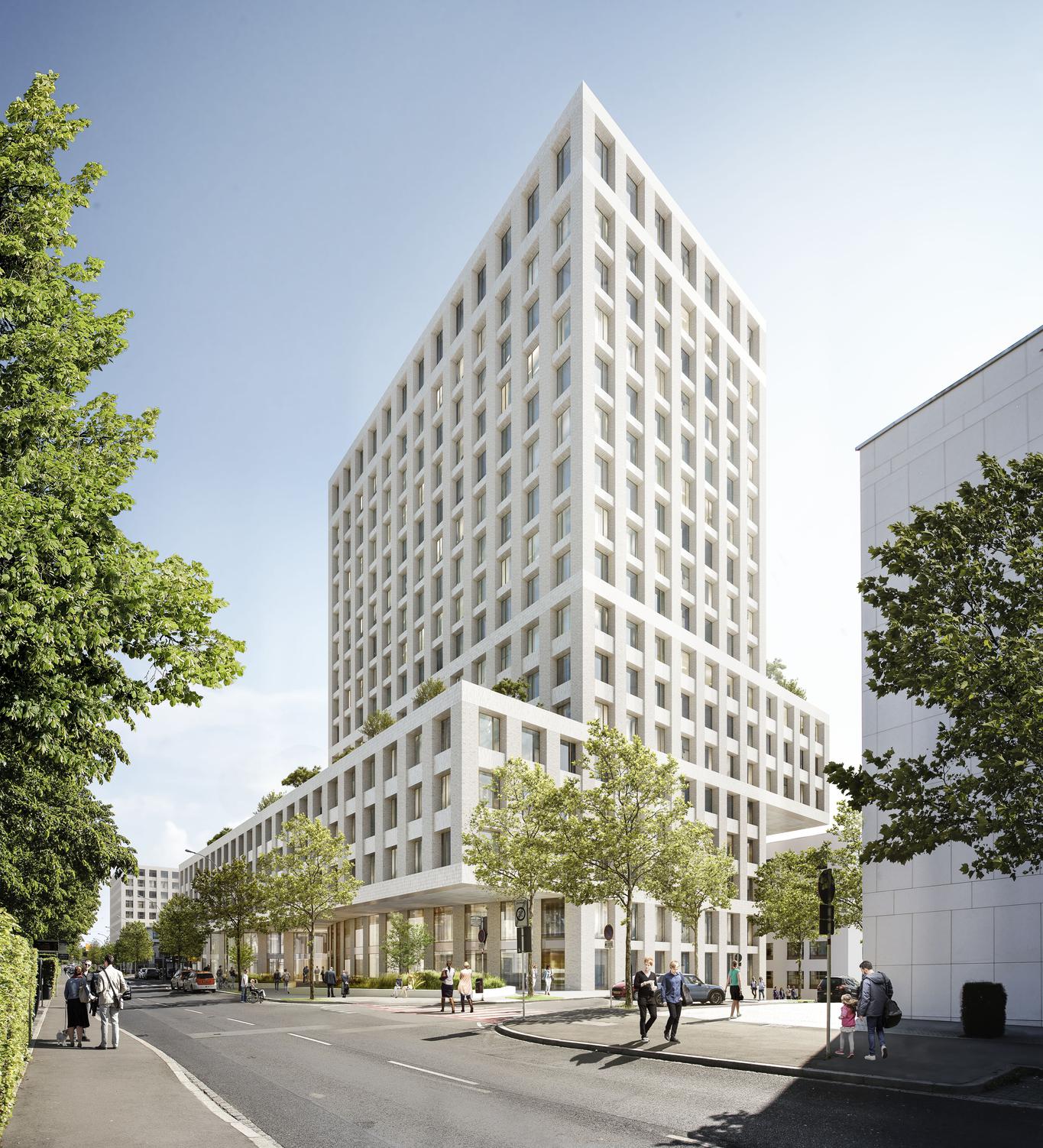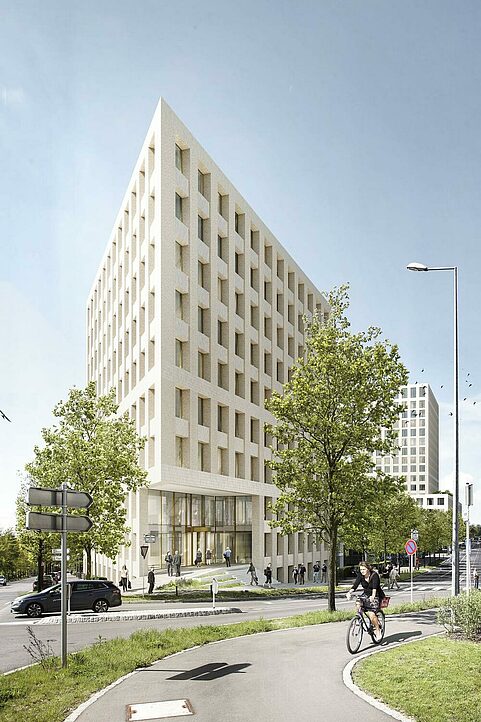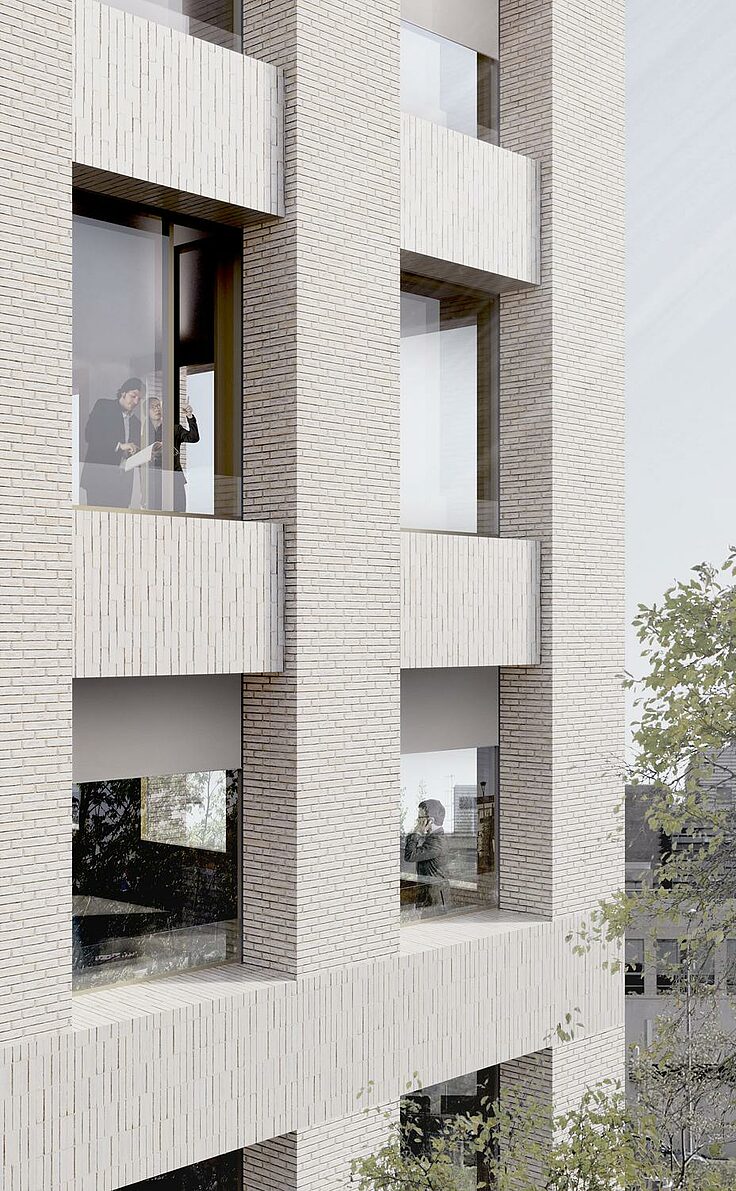More content
Health

A place for people not a medical machine. The construction of a new extension was to help prepare Kirchberg Hospital for the future and demonstrate its commitment to the local area with a distinctive, iconic building that would fit perfectly into the surrounding neighbourhood. Other objectives were to remodel the hospital in line with current spatial needs and create an attractive working and convalescent environment with a human feel.
The extension rounds off the complex to form a new whole. Shifting the focus in terms of volume has opened up an interior space and created a new central point, while breaking up the monolithic structure has reduced it to a more human scale. The height of the new build gives it a landmark quality and provides sightlines across the whole neighbourhood.
A model for the contemporary understanding of health systems
Thanks to its functionally neutral structure, in addition to its main uses as a hospital extension with a hotel on the upper floors, the building also lends itself to a range of other uses. An efficient layout with logical access routes and through-connections, lots of natural light and carefully selected materials combine to produce a positive atmosphere.


Insights
Functional neutrality, solidity and flexibility help keep life-cycle costs down. The fact that the hospital can be extended without major building work, in particular, gives considerable planning flexibility.
Precise phased planning means that the new structure can be built while the hospital is in operation with the primary focus on optimising the building in terms of process organisation, construction requirements, life-cycle costs and its grey-energy footprint.
References to nature and to local building traditions
The site as a whole offers a range of different environments and a carefully orchestrated green space concept inside and out, combining visual and haptic elements. Coordinated planting throughout the building in the form of a hanging green sculpture, for example, creates a visual link between interior and exterior, generating attractive views and sightlines.
Load-bearing structure, shell and building plant and services are all arranged separately to maximise adaptability and facilitate reconfiguration. The monumental façade is highly insulated and clad entirely in light-coloured fired bricks typical of the region. The extensive use of a single, recyclable building material that is both environmentally friendly and local speaks to the sustainability, durability and timelessness of the building – both in its current and future incarnations.